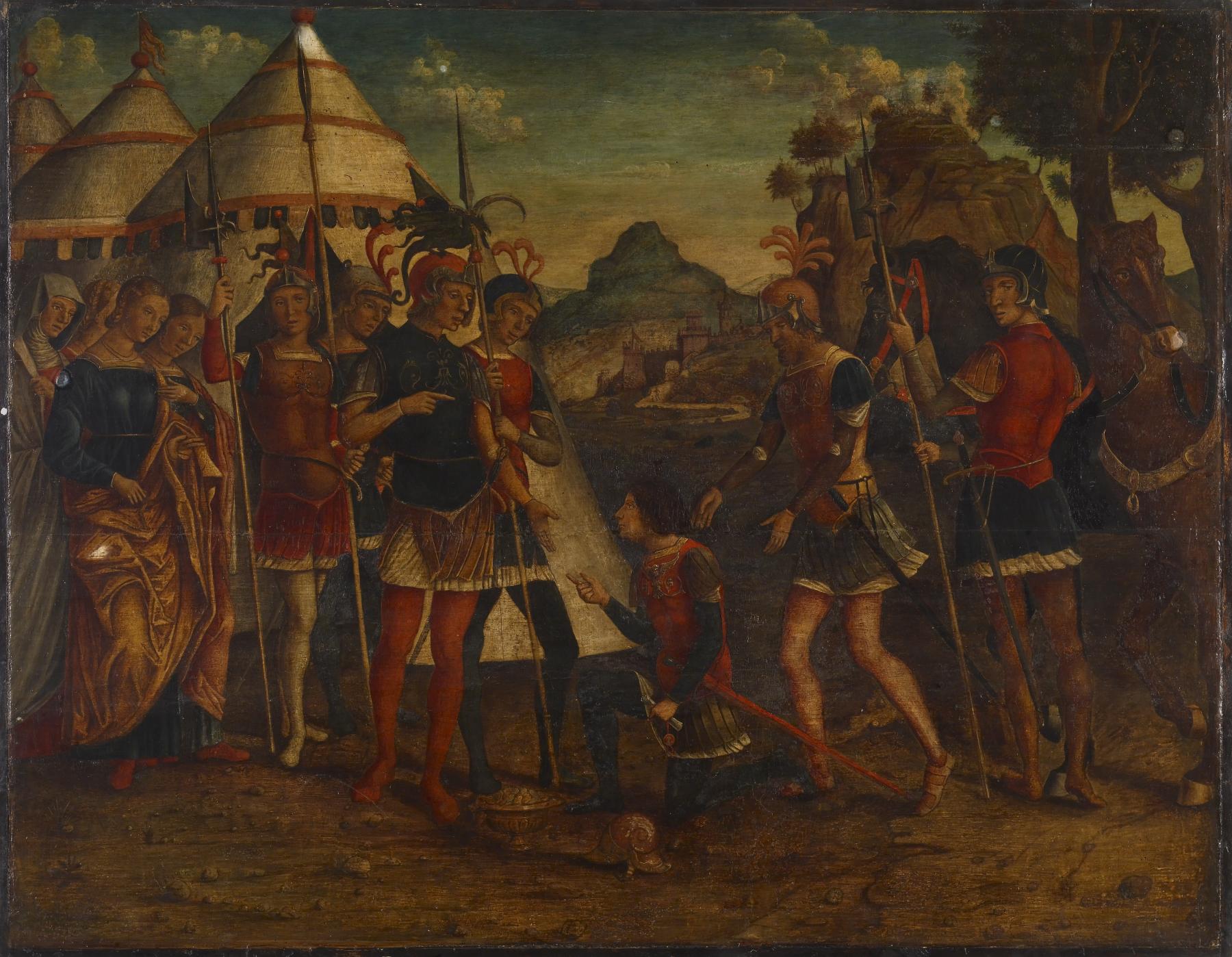The Magnanimity of Scipio Africanus
(Renaissance Europe )
According to the ancient Roman writer Livy (64 BCE-12 CE), the Roman general Scipio Africanus (236-183 BCE) captured a young maiden during his siege of the town of Cartagena in Spain. Female prisoners were usually brutalized by their Roman abductors but Scipio treated his captive with respect. He eventually returned her safely to her fiancé, Allucius, in exchange for Cartagena’s allegiance to the Roman Empire. Scipio’s magnanimity (generosity) was celebrated during the Renaissance as an outstanding example of virtuous behavior. It became popular as a subject for “spalliere,” horizontal panels installed at shoulder height (“spalla”=shoulder) in the rooms of patrician palaces and illustrated with narratives that encouraged moral behavior. In this spalliera panel, painted in the north Italian city of Verona in the late 1400s, Scipio stands at the center of the composition before Allucius, who kneels before Scipio and offers him a gold vessel as part of his fiancée’s ransom. His fiancée, wearing a dark blue dress and yellow cloak, can be seen behind Scipio’s fellow soldiers. All of the figures are represented wearing the highest Renaissance fashions, rather than classical togas, in an effort to make the story resonate with its 15th-century audience. The discolored varnish makes the painting quite difficult to read.
Provenance
Provenance (from the French provenir, 'to come from/forth') is the chronology of the ownership, custody, or location of a historical object.
William T. / Henry Walters Collection, Baltimore [date and mode of acquisition unknown]; Walters Art Museum, 1931, by bequest.
Conservation
| Date | Description | Narrative |
|---|---|---|
| 8/16/1939 | Treatment | other |
| 7/12/1954 | Treatment | other |
| 7/12/1954 | Treatment | repaired |
| 9/3/1965 | Treatment | loss compensation; coated |
Geographies
Italy, Verona (Place of Origin)
Measurements
Painted surface H: 36 7/16 x W: 47 3/16 x Min. D: 13/16 in. (92.5 x 119.8 x 2 cm); Max. D: 1 in. (2.5 cm)
Credit Line
Acquired by William T. or Henry Walters
Location in Museum
Not on view
Accession Number
In libraries, galleries, museums, and archives, an accession number is a unique identifier assigned to each object in the collection.
In libraries, galleries, museums, and archives, an accession number is a unique identifier assigned to each object in the collection.
37.1118


